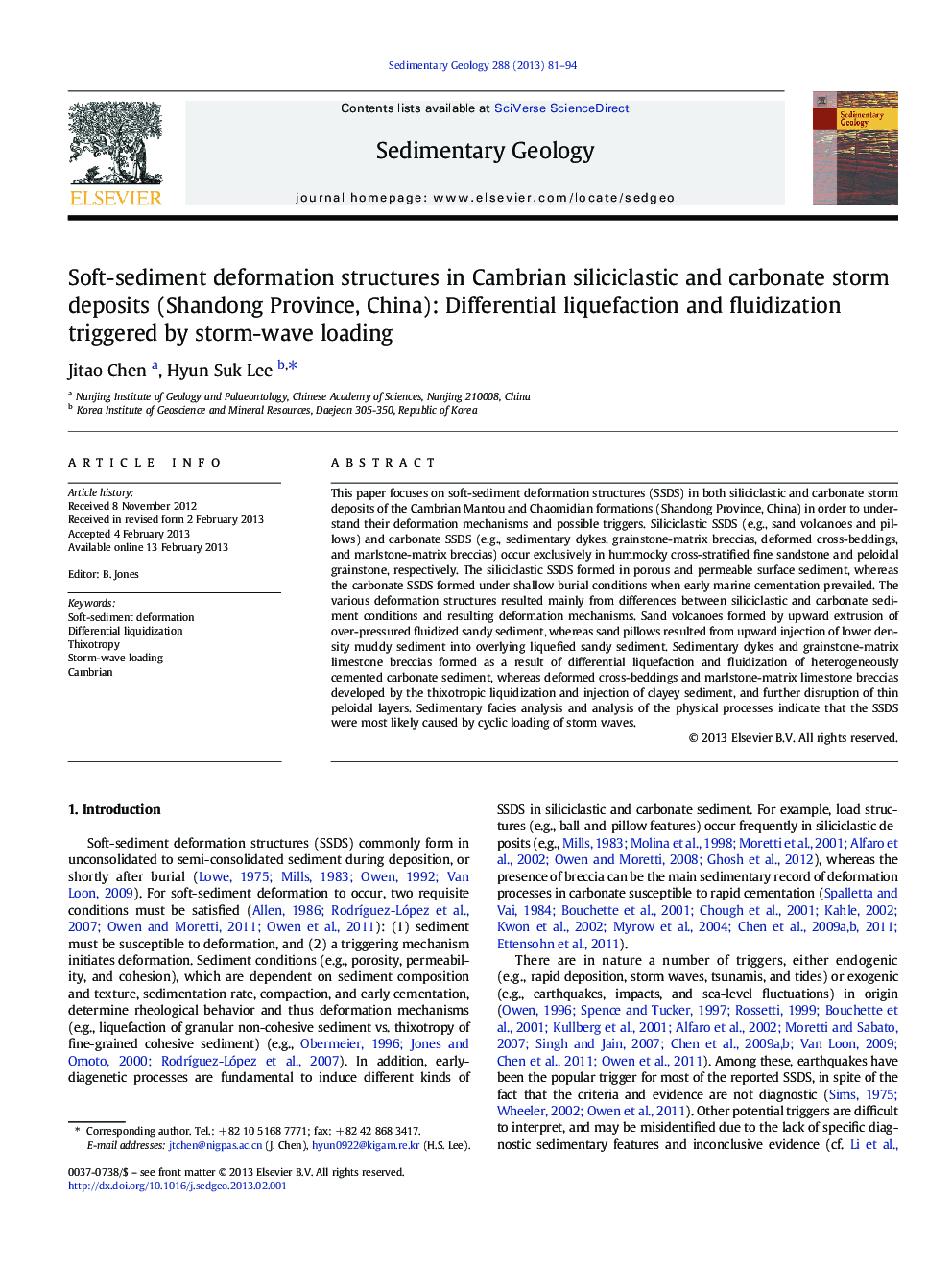| کد مقاله | کد نشریه | سال انتشار | مقاله انگلیسی | نسخه تمام متن |
|---|---|---|---|---|
| 4689650 | 1636075 | 2013 | 14 صفحه PDF | دانلود رایگان |
This paper focuses on soft-sediment deformation structures (SSDS) in both siliciclastic and carbonate storm deposits of the Cambrian Mantou and Chaomidian formations (Shandong Province, China) in order to understand their deformation mechanisms and possible triggers. Siliciclastic SSDS (e.g., sand volcanoes and pillows) and carbonate SSDS (e.g., sedimentary dykes, grainstone-matrix breccias, deformed cross-beddings, and marlstone-matrix breccias) occur exclusively in hummocky cross-stratified fine sandstone and peloidal grainstone, respectively. The siliciclastic SSDS formed in porous and permeable surface sediment, whereas the carbonate SSDS formed under shallow burial conditions when early marine cementation prevailed. The various deformation structures resulted mainly from differences between siliciclastic and carbonate sediment conditions and resulting deformation mechanisms. Sand volcanoes formed by upward extrusion of over-pressured fluidized sandy sediment, whereas sand pillows resulted from upward injection of lower density muddy sediment into overlying liquefied sandy sediment. Sedimentary dykes and grainstone-matrix limestone breccias formed as a result of differential liquefaction and fluidization of heterogeneously cemented carbonate sediment, whereas deformed cross-beddings and marlstone-matrix limestone breccias developed by the thixotropic liquidization and injection of clayey sediment, and further disruption of thin peloidal layers. Sedimentary facies analysis and analysis of the physical processes indicate that the SSDS were most likely caused by cyclic loading of storm waves.
Journal: Sedimentary Geology - Volume 288, 15 April 2013, Pages 81–94
